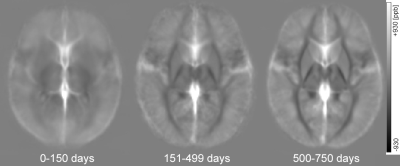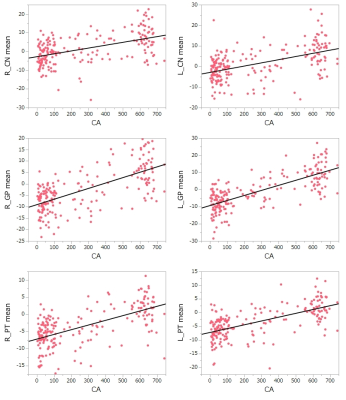Sayo Otani1, Yasutaka Fushimi1, Satoshi Nakajima1, Akihiko Sakata1, Takuya Hinoda1, Sonoko Oshima1, Krishna Pandu Wicaksono1, Hiroshi Tagawa1, Yang Wang1, and Yuji Nakamoto1
1Kyoto University Graduate School of Medicine, Kyoto, Japan
1Kyoto University Graduate School of Medicine, Kyoto, Japan
We
evaluated magnetic susceptibility of a large number of pediatric subjects. Our
study showed that magnetic susceptibility of the basal ganglia and thalamus
increased with chronological age from birth to 2 years using volume-of-interest
analysis.


